2020 Land Rover Defender 110 Review: First Drive

Here was an icon—Britain’s own take on the Jeep Wrangler formula, or the off-roading equivalent of the original Mini. No matter what Land Rover did, it was going to piss off someone.
Sure enough, when this new-gen Defender debuted, there was some complaining and pearl-clutching. It’s gone soft, they said. But I’ll level with you: the old Defender was a farm implement. It was a goat (and the GOAT) off-road, but it rode like a tractor and wobbled like a wacky waving inflatable arm-flailing tube man.
The new Defender is definitely more upmarket, sure: a reflection of Land Rover’s general ascension over the last few decades. After spending a day with it, I can tell you that’s to its benefit. The new Defender is still incredibly accomplished off-road, but now you’ll relish the time with it on the tarmac between destinations too.
SEE ALSO: 2020 Jeep Wrangler Rubicon ReviewModern looks
In person, the new Defender is a big chunk of British beef. The slab-sided styling makes it look enormous, and that’s because it is: the 110 is ever so slightly longer than a Range Rover, and nine inches (230 mm) longer than a four-door Wrangler. It’s taller than the American too, and half a foot wider. It’s imposing, and this is only the middle child: the shorter three-door model is starting to arrive on our shores, and Land Rover has confirmed a longer 130 is on the way.
Land Rover’s design team, led by Gerry McGovern, has done a good job of modernizing the classic look. The squared-off headlights with circular DRLs is a nod to the original’s face, though it doesn’t look quite as shocked now—more stern. Look up to the roof and you’ll find thin glass skylights on either side, another classic Defender design cue. The clearest connection to the 2020 Defender’s predecessor is out back though. There’s the same sharp edge to the entire rear, a flat back that allows for the traditional full-size spare to be fitted to the side-opening rear hatch. The taillights are all visually separated, like the individual elements on the original.
FAST FACTS
| Engine: | 3.0L I6 Turbo and Supercharged |
| Output: | 395 hp, 406 lb-ft |
| Transmission: | 8AT, 4WD |
| US fuel economy (MPG): | 17/22/19 |
| CAN fuel economy (L/100KM): | 13.8/10.7/12.4 (est) |
| Starting Price (USD): | $51,250 (inc. dest.) |
| As-Tested Price (USD): | $80,650 (est, inc. dest.) |
| Starting Price (CAD): | $67,595 (inc. dest.) |
| As-Tested Price (CAD): | $96,000 (est, inc. dest.) |
It looks smart, especially in the Pangea Green of our tester. Land Rover is offering up a variety of accessories too, like the Adventure Pack. For a few extra grand, the pack adds an A-pillar-mounted intake—Land Rover is quick to point out it’s not a snorkel—a lockable storage box on the side of the exterior, and a few other goodies.
Like the exterior, the new Defender’s insides are a mix of functionality and a heightened sense of luxury. There’s leather on the seats—but only for the trim. The rest is a hard-wearing textile, and the whole floor is rubberized for easy hosing out. Exposed bolts dot the door cards, and everything is an earth tone. The designers didn’t abandon function either: the powder-coated magnesium running the entire width of the dash has two grab handles on the ends, in case you need to push.
As we head onto the path, we hope we won’t have to test that first-hand.
Off-road action
You wouldn’t expect a race track to have an off-road playground, but Mosport does. The weather is mercifully dry, but there are still plenty of ruts, steep inclines, and yumps for the Defender to tackle. We shift the Defender into low-range mode, raise the standard air-suspension to its highest setting, and select the mud option for Terrain Response. The latest iteration of the system allows users to tailor the experience, but we stick to the standard setting, which modifies the throttle response, differentials, and other things to make short work of the path.
It works. A set of moguls looks like it could pull off some bodywork, but the Defender makes smooth, consistent progress. A wheel will hang in the air, and the system will send power to the ones still in contact with terra firma. Photog Harry and I barely bobble around in our seats.
Another test involves going over a steep, abrupt bump about a foot tall. Heading over on a slight angle and very little throttle, the Defender balances on two diagonal wheels before gently setting its nose down on the other side. Breakover and departure angles out-point the four-door Wrangler, but the Defender’s chunkier nose does limit its approach slightly versus the Jeep.
The sternest test is what our instructors call “the Corkscrew”. No, we haven’t suddenly transported to Monterey. This off-road rendition twists first to the right then to the left on a steep decline, with some additional dips thrown in for good measure. We have a spotter for our descent, in addition to the under-the-nose camera feed showing up on the dash. From inside it feels like the moment before the first drop on a rollercoaster, gravity pulling us against our seatbelts. Slowly but always surely, the Defender inches its way down, the Terrain Response always making sure the other part of the theme park experience never happens. Crucially, it never feels like it’s doing the job for you—it’s just helping you do it better.
On-road comfort
So the Defender still impresses off-road. No surprise there. The drive out to the track affords us a chance to cruise on the highway with the 110 though, and it’s here where the biggest—and if I’m honest, most welcome—surprises lie.
For starters, this big boy feels pretty quick. The P400 model uses JLR’s new 3.0-liter inline-six. With both a turbo and electrically powered supercharger bolstering it, and a mild-hybrid system, the whole package produces 395 horsepower and 406 lb-ft of twist. Dip into the throttle and the Defender quickly shifts forward, with smooth manners from the eight-speed automatic transmission. There’s even a bit of a growl: I’m told the A-pillar-intake-equipped testers sound even better.
The ride is also very comfy. There’s a fair amount of wind noise, as expected, but that air suspension provides the Defender with a dual personality. It can amble over ruts with the best of them, but it also smooths out the constant bpm of the highway. Contributing to the calm is a very light steering wheel: I’d argue it’s almost too light, but it does mean piloting the Defender on the highway is a stress-free job. There’s none of the constant corrections you’ll need in a Wrangler.
Another big advantage for everyday use is the new Pivo infotainment system. It’s leaps and bounds better than what’s come before, with a stylish interface and quick responses. There’s a lot to dive into for the off-road settings here, including numerous exterior camera views to act as digital spotters. One of our favorites is a setup straight out of a video game, where a 3D model of the car sits within the environment, the latter constructed entirely from the cameras. Not sure if that big dip is right where you’re going to open your door? The system’s got you covered.
While it’s a very trick feature, I found the changing wheel-mounted buttons more of an issue than a benefit. They change depending on what menu you’re in, which increases the likelihood of you needing to look down to know what you’re pressing. Thus defeating the purpose of wheel-mounted buttons to begin with.
We found the second-row more than spacious enough for adults. While those roof-mounted skylights are cool, their chunky reinforcements do limit the amount rear-seat passengers can actually see out of them. Still, it’s additional natural light, if you find the enormous panoramic sunroof lacking. Our tester had the optional third row: it will fit adults, but you’ll feel more “installed” than “seated”. Fold ’em flat and you’ve got a massive load space.
Verdict: 2020 Land Rover Defender 110 First Drive Review
It’s those drives to and from the off-roading experience that solidify the new Defender’s message. This is a different beast than the one that’s come before, a more cultured one. For some, that dampens the appeal. There was an almost masochistic joy in threading the old warhorse through a tree-strewn path, both the driver and truck groaning over the rougher stuff. I get it.
But this new Defender will appeal to more people, and bring them into the fold. Land Rover has distilled everything it’s learned about engineering and technology into this SUV, creating something capable of tackling any situation you throw it at. It won’t tire you out on the way to the trail, thanks to a premium interior that walks the line between luxury and practicality. And once you get there, it’ll still hang with just about anything else out there.
Become an AutoGuide insider. Get the latest from the automotive world first by subscribing to our newsletter here.
LOVE IT
- Fantastic off-road chops and on-road manners
- Powerful inline-six engine
- Smart interior feels premium and practical
LEAVE IT
- Can feel a little too big on trails
- Pricey options
- Tight optional third row

Kyle began his automotive obsession before he even started school, courtesy of a remote control Porsche and various LEGO sets. He later studied advertising and graphic design at Humber College, which led him to writing about cars (both real and digital). He is now a proud member of the Automobile Journalists Association of Canada (AJAC), where he was the Journalist of the Year runner-up for 2021.
More by Kyle Patrick



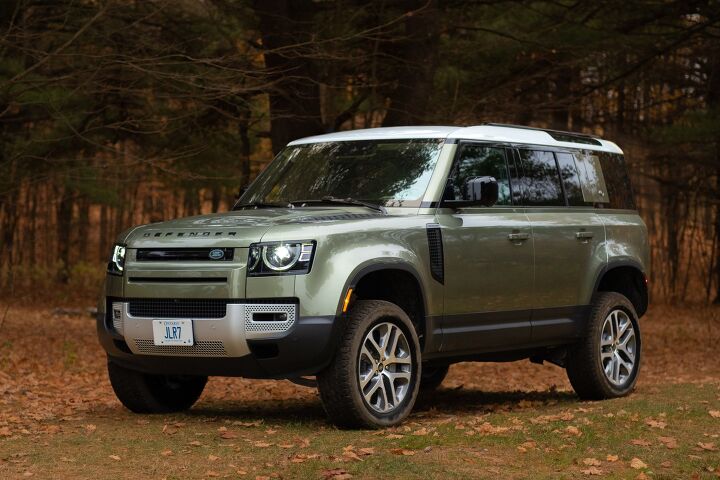
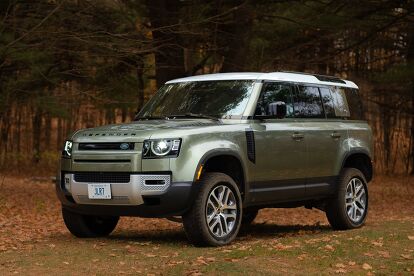





































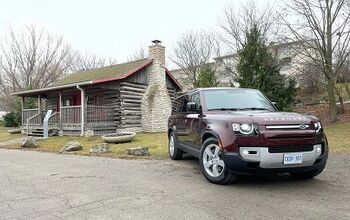



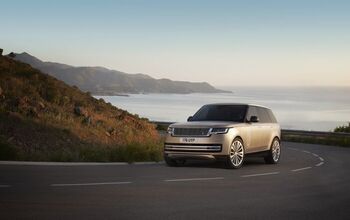
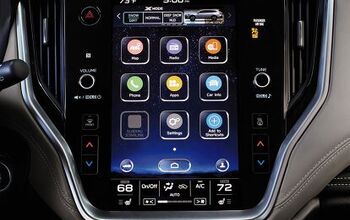


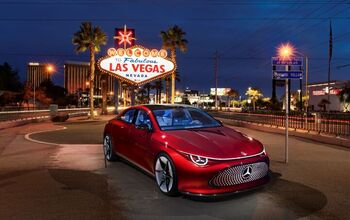






Comments
Join the conversation